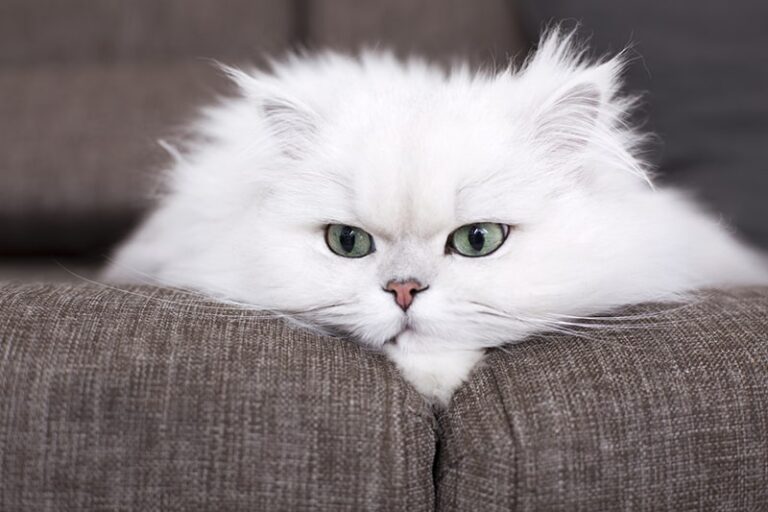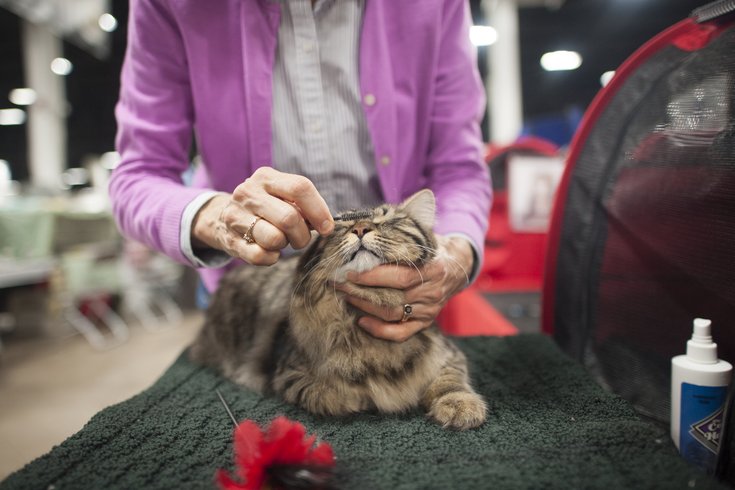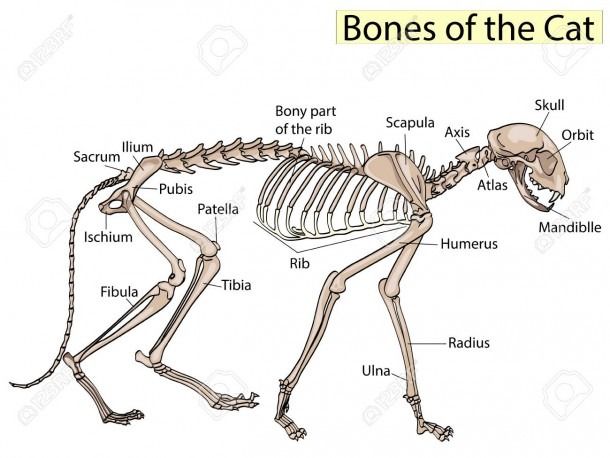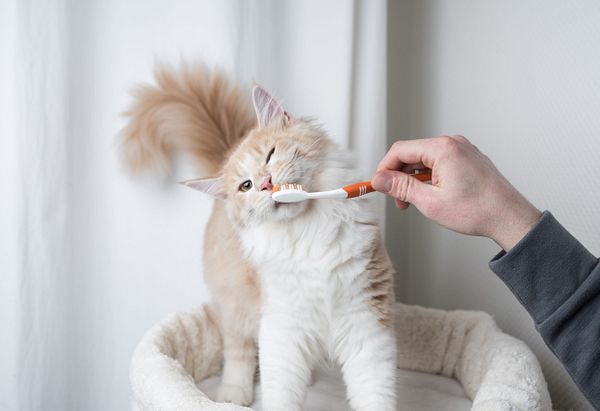Skeletal muscles in cats
Structure and Function: Exploring the Anatomy of Cat Skeletal Muscles
The anatomy of cat skeletal muscles is a fascinating subject that sheds light on the intricate workings of these incredible feline creatures. When dissected, the muscular structure underneath a cat’s skin reveals a complex network of fibers that enable their extraordinary agility and flexibility. Each muscle serves a specific purpose and is strategically placed throughout the cat’s body to support its overall mobility and movement.
At a microscopic level, cat skeletal muscles are composed of long, cylindrical fibers known as myocytes. These myocytes are arranged in bundles and are responsible for generating the force needed for the cat to walk, run, jump, and perform other physical actions. Within the myocytes are smaller structures called myofibrils, which play a crucial role in muscle contraction. These myofibrils are made up of even smaller units called sarcomeres, which are responsible for the characteristic stripy appearance of skeletal muscles. Understanding the intricate structure of cat skeletal muscles provides valuable insights into their function and how they contribute to the overall physical abilities of these majestic creatures.
Understanding the Importance of Skeletal Muscles for Cat Mobility and Movement
Skeletal muscles play a pivotal role in cat mobility and movement, enabling them to perform various activities with agility and precision. These muscles are responsible for the feline’s ability to jump, pounce, climb, and run, allowing them to explore their surroundings and engage in natural behaviors. Without the proper functioning of skeletal muscles, a cat’s movements would be compromised, affecting their overall quality of life.
The importance of skeletal muscles for cat mobility can be attributed to their ability to generate force and produce movement. When a cat wants to jump onto a ledge or chase a toy, it relies on the contraction and relaxation of its skeletal muscles to exert the necessary force. This force allows the muscles to move the cat’s bones, resulting in the desired movement. Additionally, skeletal muscles also contribute to the cat’s posture and stability, aiding in balance and coordination during various activities. This intricate interplay between muscles, bones, and nerves ensures that cats can navigate their environment with grace and precision.
Muscle Groups: Unveiling the Different Types of Skeletal Muscles in Cats

There are several different types of skeletal muscles found in cats, each playing a unique role in their overall mobility and movement. These muscles can be grouped into specific categories based on their location and function in the cat’s body.
One of the main muscle groups in cats is the axial muscles, which are located along the cat’s spine and play a crucial role in maintaining posture and providing stability. The axial muscles include the deep muscles of the back, as well as the muscles of the neck and tail. These muscles work together to support the cat’s body and allow for fluid movements.
In addition to the axial muscles, cats also have appendicular muscles, which are responsible for controlling the movements of their limbs. These muscles are divided into several smaller groups, including the muscles of the forelimbs, hindlimbs, and the muscles that connect the limbs to the body. The appendicular muscles enable cats to walk, run, jump, and perform other intricate movements with precision and agility.
Understanding the different types of skeletal muscles in cats is essential for appreciating the complexity and sophistication of their musculoskeletal system. Each muscle group serves a specific purpose in enabling cats to navigate their environment and perform a variety of actions with ease. By unraveling the mysteries of these muscle groups, we can gain a deeper insight into the marvelous biomechanics of these graceful felines.
Muscle Fiber Types: Delving into the Composition of Cat Skeletal Muscles
Skeletal muscles in cats are not all the same. They are composed of different types of muscle fibers that contribute to various functions and movements. Understanding the composition of these muscle fibers is essential in comprehending the complexity and versatility of a cat’s musculoskeletal system.
One type of muscle fiber found in cat skeletal muscles is called Type I, or slow-twitch fibers. These fibers are characterized by their endurance and ability to sustain contractions for extended periods. Type I fibers rely on aerobic metabolism, meaning they primarily use oxygen to generate energy. These fibers are well-suited for activities that require prolonged effort, such as maintaining posture and steady movements. Cats with a higher proportion of Type I fibers may excel in activities such as climbing or prolonged periods of stalking.
Muscle Contractions: How Skeletal Muscles Enable Cats to Perform Various Actions
Skeletal muscles play a crucial role in enabling cats to perform a wide range of actions. These muscles are responsible for producing movement in the cat’s body, allowing them to walk, run, jump, climb, and perform various other actions with precision and agility. The key to these movements lies in the process of muscle contractions.
Muscle contractions occur when the muscle fibers within the skeletal muscles shorten and tighten. This contraction generates the force needed for movement. When a cat wants to move a particular part of its body, such as its leg or tail, signals from the brain travel through the nervous system to the specific muscle groups involved. This prompts the muscle fibers to contract and produce the desired movement. Cats have complex and well-developed muscle systems, allowing for intricate and coordinated movements, essential for their survival in different environments.
Role in Balance and Stability: Examining the Contribution of Skeletal Muscles in Cats
The skeletal muscles in cats play a crucial role in maintaining their balance and stability. These muscles act as the primary support system for the cat’s body, helping it maintain an upright posture and navigate its environment with ease. Without strong and coordinated skeletal muscles, cats would find it challenging to maintain their balance and perform everyday activities such as walking, running, and jumping.
The contribution of skeletal muscles to balance and stability lies in their ability to generate force and control movement. When a cat is in motion, its muscles contract and relax in a coordinated manner, allowing it to move its limbs and maintain balance. The skeletal muscles also work in conjunction with other structures, such as the bones and joints, to provide stability and prevent the cat from toppling over. Additionally, the muscles located in the cat’s core, such as the abdominal and back muscles, provide stability to its spine, enabling it to have a strong and steady foundation for movement. Overall, the contribution of skeletal muscles to balance and stability is paramount in allowing cats to maintain their agility and grace.
Muscle Development in Kittens: A Look into the Growth and Maturation of Skeletal Muscles
Muscle development in kittens is a fascinating process that plays a crucial role in their growth and overall physical capabilities. As kittens are born, their skeletal muscles are already present, but they are relatively underdeveloped and lack the strength and coordination seen in adult cats.
During the first few weeks of life, kittens primarily rely on their mother’s milk to obtain the necessary nutrients for muscle growth. As they gradually transition to solid food, their muscles start to develop and mature. Regular exercise, such as playtime with littermates or interactive toys, also contributes to the strengthening of their skeletal muscles. Through this combination of proper nutrition and physical activity, kittens are able to gradually enhance their muscle mass and improve their motor skills.
The Role of Exercise: How Physical Activity Affects the Health and Strength of Cat Skeletal Muscles
Exercise plays a vital role in maintaining the health and strength of cat skeletal muscles. Regular physical activity helps to ensure that muscles receive the necessary stimulation and blood flow for optimal functioning. Just like in humans, exercise in cats promotes muscle growth and development, allowing them to maintain a lean and muscular physique.
Engaging in physical activity also aids in improving the flexibility and range of motion of cat skeletal muscles. Stretching and moving their bodies through various forms of exercise helps to keep their muscles supple and prevents stiffness and tightness. This is especially important for older cats, as regular exercise can help to alleviate age-related muscle issues such as arthritis and muscle degeneration.
Aside from the physical benefits, exercise also has positive effects on a cat’s mental well-being. Physical activity stimulates the release of endorphins, which are known as the body’s natural mood boosters. This can help in reducing stress, anxiety, and depression in cats, promoting overall emotional and psychological health.
In conclusion, exercise is crucial for maintaining the health and strength of cat skeletal muscles. It helps to promote muscle growth, flexibility, and range of motion, while also providing several mental health benefits. Regular physical activity should be incorporated into a cat’s daily routine, ensuring that they lead a healthy and active life.
What is the structure and function of cat skeletal muscles?
Cat skeletal muscles are made up of muscle fibers that are organized into bundles called fascicles. These muscles play a crucial role in enabling cat mobility and movement.
Why are skeletal muscles important for cat mobility and movement?
Skeletal muscles provide the necessary force for cats to walk, run, jump, and perform other movements. They work in coordination with the bones and joints to allow for fluid and controlled motion.
What are the different types of skeletal muscles in cats?
Cats have various types of skeletal muscles, including those found in the limbs (such as the quadriceps and hamstrings), back muscles, abdominal muscles, and muscles involved in facial expressions.
What are muscle fiber types in cat skeletal muscles?
Cat skeletal muscles consist of different types of muscle fibers, including slow-twitch fibers that are responsible for endurance activities and fast-twitch fibers that enable quick and powerful movements.
How do skeletal muscles enable cats to perform various actions?
Skeletal muscles work through a process called muscle contraction, where muscle fibers generate tension and shorten, allowing cats to perform actions such as walking, pouncing, and grooming.
What is the role of cat skeletal muscles in balance and stability?
Skeletal muscles play a crucial role in maintaining balance and stability in cats. They work together to support the cat’s posture, prevent falls, and assist in activities such as climbing and landing.
How do skeletal muscles develop in kittens?
Skeletal muscle development in kittens involves the growth and maturation of muscle fibers. As kittens engage in physical activity, their muscles strengthen and become more coordinated.
How does exercise affect the health and strength of cat skeletal muscles?
Regular exercise is essential for maintaining the health and strength of cat skeletal muscles. It helps improve muscle tone, flexibility, and endurance, and can prevent muscle atrophy and age-related muscle decline.







